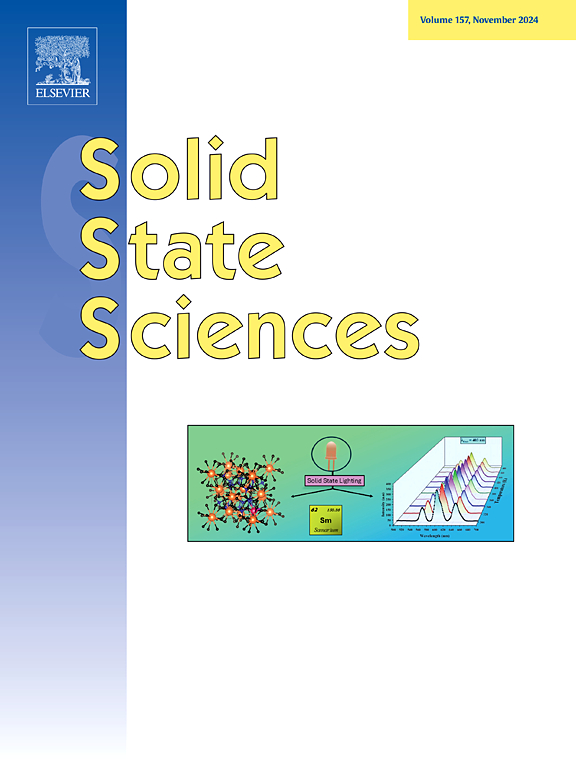Enhanced thermoelectric properties in Bi2Sr2-xBaxCo2Oy via doping and texturing for integration in more efficient thermoelectric generators
IF 3.4
3区 化学
Q2 CHEMISTRY, INORGANIC & NUCLEAR
引用次数: 0
Abstract
Bi2Sr2-xBaxCo2Oy (0 ≤ x ≤ 0.15) thermoelectric samples have been sintered, and textured through the laser floating zone process using a Nd:YAG laser. Powder XRD studies showed that the thermoelectric phase is the major one in all cases, with higher amount of secondary phases in the textured ones due to their incongruent melting. Microstructural characterization revealed a drastic microstructural modification in the textured samples, when compared to the sintered ones, producing much larger and well oriented grains along the growth direction. These characteristics led to lower electrical resistivity in textured samples, reaching the minimum at 650 °C (14.8 mΩ cm) in 0.125Ba-doped samples, which is lower than those typically reported in this system. On the other hand, no significant variation in Seebeck coefficient has been found between the samples. This behaviour is associated to the isovalent doping which does not modify the charge carrier concentration in the material, and the highest values at 650 °C (166 μV/K) are in the order of the reported in the literature. As a consequence, power factor values are mainly driven by the electrical resistivity values, leading to the highest values at 650 °C in 0.125Ba-doped textured samples (0.19 mW/K2m) due to their lowest resistivity. These values are higher than the reported for textured materials and in the order of the best reported for this compound in bulk form. All these properties, together with the possibility of the direct integration of these compounds in thermoelectric modules, make them very attractive for practical applications ensuring access to affordable, reliable, and sustainable energy for all.

求助全文
约1分钟内获得全文
求助全文
来源期刊

Solid State Sciences
化学-无机化学与核化学
CiteScore
6.60
自引率
2.90%
发文量
214
审稿时长
27 days
期刊介绍:
Solid State Sciences is the journal for researchers from the broad solid state chemistry and physics community. It publishes key articles on all aspects of solid state synthesis, structure-property relationships, theory and functionalities, in relation with experiments.
Key topics for stand-alone papers and special issues:
-Novel ways of synthesis, inorganic functional materials, including porous and glassy materials, hybrid organic-inorganic compounds and nanomaterials
-Physical properties, emphasizing but not limited to the electrical, magnetical and optical features
-Materials related to information technology and energy and environmental sciences.
The journal publishes feature articles from experts in the field upon invitation.
Solid State Sciences - your gateway to energy-related materials.
 求助内容:
求助内容: 应助结果提醒方式:
应助结果提醒方式:


